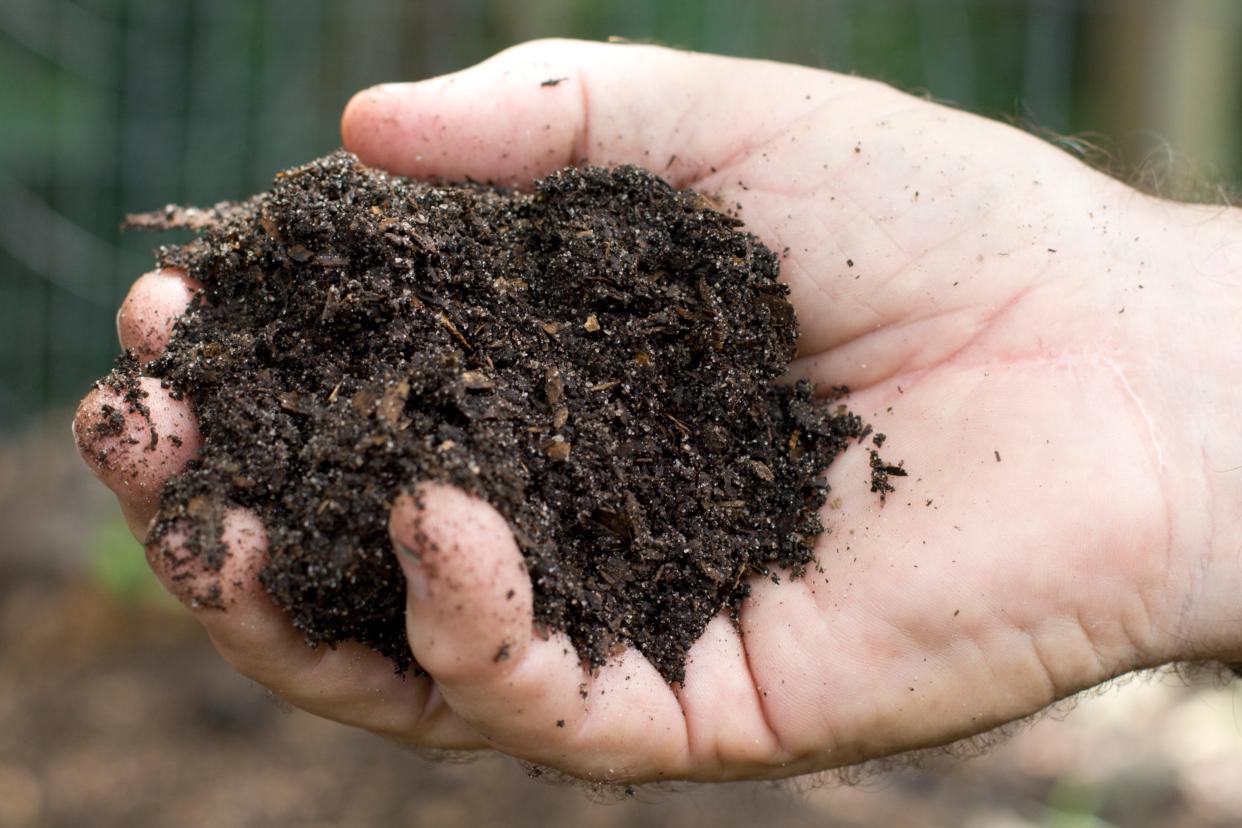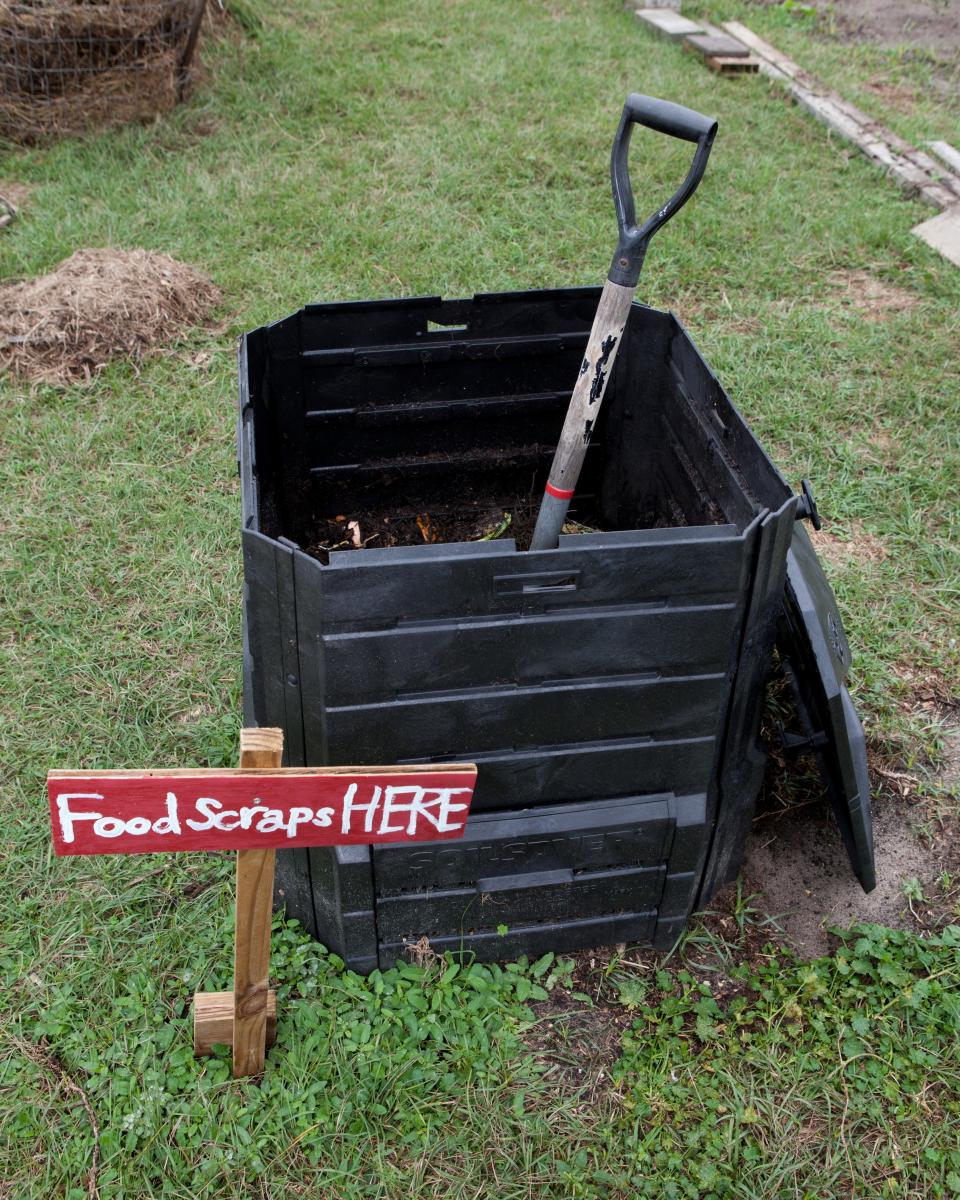Why you should compost and how to do it

Many landscape plants can benefit greatly from amended soil. Our native sandy soil drains readily and doesn’t do so well with holding on to soil nutrients and water. But you can produce your own high-quality soil amendment at a very low cost in the form of compost.
Using compost has other benefits besides holding onto water in times of drought. It is a source of slow-release fertilizer for your plants. Earthworms will start to appear in your beds. Nematodes will stay out of your vegetable garden when used in large amounts. Money will be saved instead of purchasing soil amendments. You can have the satisfaction of eating vegetables you grew in soil that you built.
Composting is very simple to do, too. It involves collecting organic material, adding water and oxygen, and letting the bacteria, fungi, and other organisms break everything down. You can literally just make a pile. The ideal size of the pile should be 3’x3’x3’. So, you really need 2 piles or bins. After you get your first pile up to the right size, stop adding to it and let it finish for a few months. While you wait, you can start accumulating stuff for pile number two and get it ready to finish off about the time you use what you made in pile one. You will know it is finished when it is crumbly and dark with an earthy smell.
More: Composting turns trash into treasure
Here's how: Make your own compost bin for recycling
More: Lessons in composting: In the end, your plants will thank you

Enclosed bins and tumblers are not necessary unless you are in an HOA or find that your pile is attracting nuisance animals. If you are handy, a 2-bin system can be constructed from old pallets or cement blocks. Wire hardware cloth can be made into a cylinder-shaped container. When it is time to turn the pile, just undo the ends of the cylinder and remove the hardware cloth, turn the pile, re-construct your cylinder a foot away, and then shovel your material back in.
The pile may need to have water added from time to time to keep the microbial activity at optimum levels. It should be damp but not soaking wet. Decomposition stops when moisture content drops below 15 percent. The decomposer organisms also need oxygen which is supplied by turning your pile a couple of times a month.
Yard waste such as leaves, grass clippings, and twigs make good parent material for the compost. Larger items should be chopped or chipped before adding. Some yard waste is better left out. Don’t throw in weeds that have gone to seed or diseased plants. Compost piles can sometimes get hot enough to kill seeds and pathogens, but there is no guarantee that yours will. Kitchen scraps go into the pile, too. Fruits and vegetables that haven’t been cooked plus coffee grounds and eggshells are excellent additions. I keep a plastic container with a lid on my kitchen counter for easy use. The container held store-bought hearts of romaine in its past life. After a few weeks, it will become a bit stinky so we will empty it, rinse it, put it in the recycle bin, and start over with another plastic container that perhaps once contained two-bite brownies.
The organic materials you add to the pile are all considered browns or greens, depending on the carbon-to-nitrogen ratio they contain. Things high in carbon such as dead leaves, twigs, and old editions of the Times-Union are browns. Things higher in nitrogen such as kitchen scraps and fresh grass clippings are greens. The ideal carbon-to-nitrogen ratio in the pile is 30:1. This doesn’t mean that you use thirty times more dead leaves than grass clippings. Leaves have a ratio of around 45:1, grass has a ratio of around 19:1, and kitchen scraps are around 15:1. Paper has a C:N ratio of 173:1. A suggested mix of 3 parts tree leaves to 1 part grass clippings is about right.
If you have access to manure from herbivores such as cattle or horses, you can use it in your pile as well. Cow manure has a ratio of 18:1, making it a green material. Make sure it is very well composted before using in your vegetable garden. Know where your manure comes from. Some animal waste may be contaminated with persistent herbicides. These herbicides come from the animal grazing on fields that were treated with certain weedkillers. The herbicides can still be present in the animal waste and when you add it to your garden, it can stunt the growth of your plants, reduce fruit set, and cause leaf deformities. There are four known persistent herbicides: clopyralid, aminocyclopyrachlor, aminopyralid, and picloram. They are approved for use in pastures, hay fields, on some grain fields, golf courses and roadways. If you suspect your compost is contaminated, experiment with starting seeds in pots of the compost to see how the seedlings and mature plants look before adding the compost to your garden.
To learn more about composting, attend a free event on Tuesday, August 22, from 4-6 p.m. You can learn about composting in Duval County and tour a commercial composting facility. Registration for the event is on Eventbrite. Just enter Compost Connection in the search bar to find the event.
Tonya Ashworth is an extension agent and environmental horticulture and Master Gardener coordinator with UF/IFAS in Duval County.
This article originally appeared on Florida Times-Union: What is composting and why do it?

